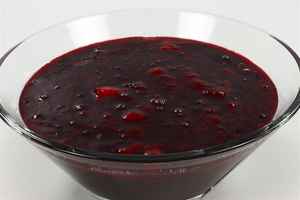 |
The Danish language is
the mother tongue for 6 million people
The Danish language is a rare commodity. Famous Danes like our beloved story teller Hans Christian Andersen, famous playwright Ludvig Holberg or philosopher Søren Kierkegaard all spoke Danish.. albeit a Danish somewhat "old school", but for which people have loved them centuries later.Growing up a Dane in the modern day and age - you are somewhat dependant upon being able to communicate in other languages such as English. After all only six million people have the Danish language as their native tongue.

The Famous Danish writer Ludvig Holberg used the Danish language in his plays with an elegance and an excellence which made his plays cherished by Danes.
Hans Christian Andersen was loved for his use of words and so was indeed Søren Kierkegaard. A genuine 24 carat philosopher searching for the truth expressed in poetic language.

Today certainly a more modern Danish is spoken everywhere ..
"Dansk" - as we say in Denmark, has a subtle expression to it. It's not very extrovert like e.g. Italian or American.. unless of course you are at an important football match or the like. The Danish language can then in a very short time unfold a dynamic of surprising proportions.
I think learning Danish has become easier for foreigners after language schools have stopped trying to teach it as it's written instead of how it's actually spoken in everyday life.
Danish is confusing for many a bit like French is... and then again not really. Anyway.. the Danish language is quite good for expressing poetry and humour. I even hear from German people that they find it cute comparison to their own language.. well even I can't disagree there.
Scandinavians generally understand each other. Norwegians and Danes share the same basic language. The pronunciation however is very different. Swedish differs the most from the two others since many words are of another origin.
Pronunciation
So.. the toughest part of learning the Danish language lies in how it is pronounced. This is also the primary obstacle for understanding one another among the three largest Scandinavian countries Sweden, Norway and Denmark.
If I speak with a Swede I really have to to prick my ears even if he speaks slowly.. and I have actually lived in Sweden when I was a kid.
Unlike in Denmark, the Swedes and the Norwegians actually pronounce their languages the way they write them. As mentioned above Norwegian in its written form is almost identical to Danish - but sounds ever so different. All in all Danish is generally considered to be the most incomprehensible of the three languages.
Speaking of which..
Below is probably the most famous "tongue breaker" sentence that Danes ask foreigners to pronounce. A real Danish shibboleth.
Try it out and .. good luck.
How would you say ..“Rødgrød med fløde”
When you have exhausted your tongue - check here how close you were

As you can see on the picture.. "rødgrød med fløde" means fruit pudding with cream and is usually made from red and black berries.

Here are some other examples that demonstrate the challenges of pronouncing the Danish language correctly. I will have audios of them shortly as well.“Freddy Fræk fra Faxe fangede i fælder 15 flotte friske fiskefrikadeller”
or..
"De hvide og de røde holder bedemøde på den fede måde"
.. say that 50 times !
Huhh?
Dialects in the Danish language are frequent and some are quite "severe". In fact I, as a Copenhagener, do not understand a word of what they say in certain northern parts of the country - just a few hundred kilometres away. Even within a small area like Denmark - dialects can be very heavy indeed

.. dialects are distinctly different even in a small country like Denmark
Although most Danes speak some sort of official Danish, perhaps with a mild dialect, in some areas they just speak like they always did .. and I wouldn't have a clue what they are saying. It's actually fun.
One would not expect that they are so different. The website unfortunately is only in Danish.. but click on the various links below to hear. Each dialect corresponds with another area in Denmark. See map above
What can you always talk with Danes about?
• The weather
• Their traditions like Christmas and birthdays
• Our Queen
• Football.. (mostly men)
• Handball.. (mostly women)
Learn Danish
Wanna learn Danish online? There aren't many good online language courses available. However I'd like to mention one though Learn to speak Danish. This excellent resource is a very well made language course with lots of instant audio samples which is exactly what you need for beginning to speak the Danish language.
There's even a long introductory try-out section to explore - for free, before deciding if you want to buy the full course.. which is actually a true bargain considering the quality.
Danish to English translation
You need a good translator from English to Danish or vice versa? There are some good Danish to English - English to Danish online dictionaries available.
As a short introduction to Danish grammar, which is somewhat of a night mare for foreigners, this resource is very helpful.
For a word to word translation this dictionary actually works



